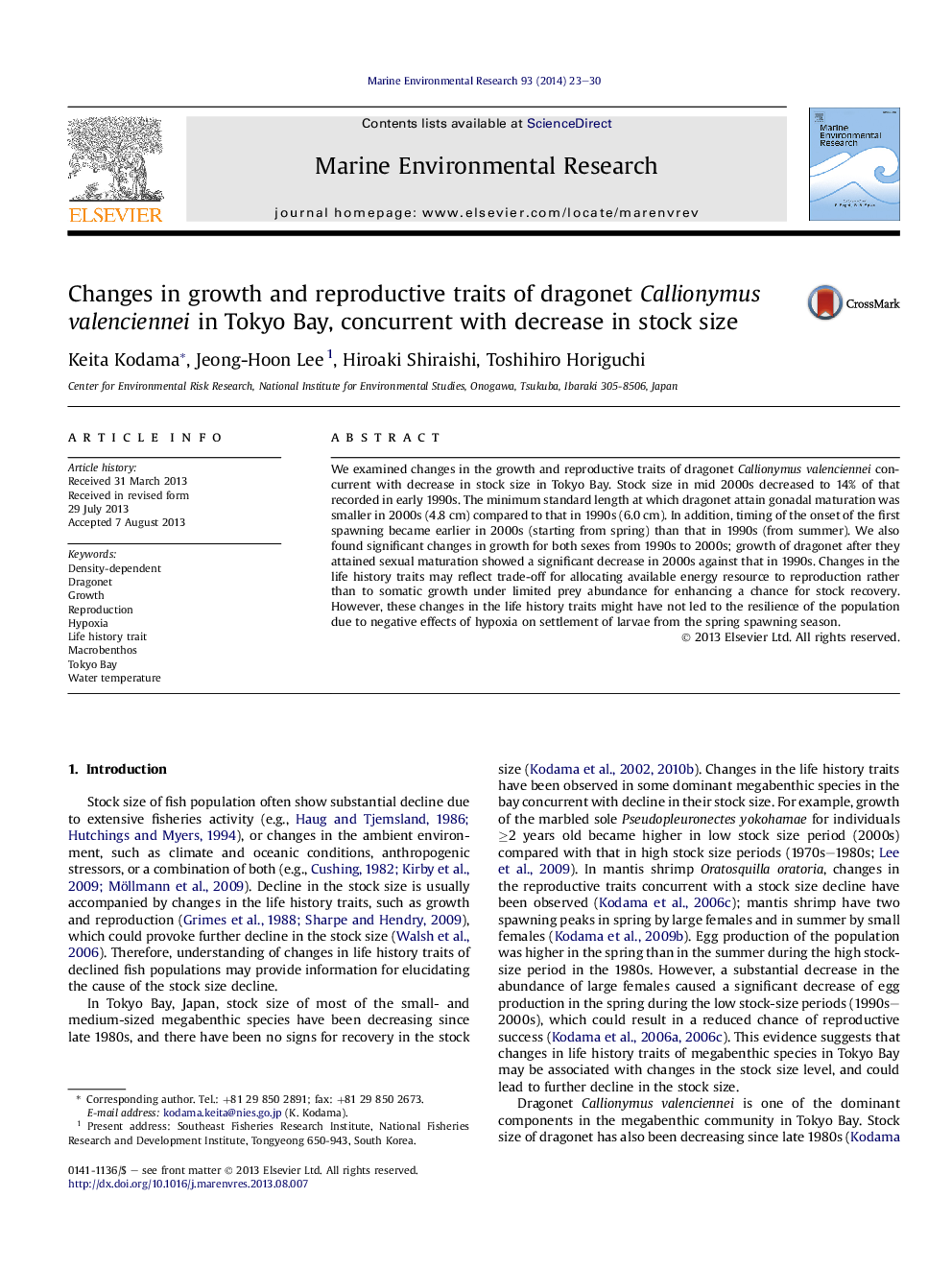| Article ID | Journal | Published Year | Pages | File Type |
|---|---|---|---|---|
| 6387911 | Marine Environmental Research | 2014 | 8 Pages |
â¢Life history traits of dragonet changed concurrent with decline in stock size.â¢Smaller and younger fish attained ovarian maturation during low stock size period.â¢Growth after fish attained sexual maturation decreased in low stock size period.â¢Decline in adult growth may reflect enhanced resource allocation to reproduction.â¢These changes may have negative effects on the resilience of the dragonet population.
We examined changes in the growth and reproductive traits of dragonet Callionymus valenciennei concurrent with decrease in stock size in Tokyo Bay. Stock size in mid 2000s decreased to 14% of that recorded in early 1990s. The minimum standard length at which dragonet attain gonadal maturation was smaller in 2000s (4.8Â cm) compared to that in 1990s (6.0Â cm). In addition, timing of the onset of the first spawning became earlier in 2000s (starting from spring) than that in 1990s (from summer). We also found significant changes in growth for both sexes from 1990s to 2000s; growth of dragonet after they attained sexual maturation showed a significant decrease in 2000s against that in 1990s. Changes in the life history traits may reflect trade-off for allocating available energy resource to reproduction rather than to somatic growth under limited prey abundance for enhancing a chance for stock recovery. However, these changes in the life history traits might have not led to the resilience of the population due to negative effects of hypoxia on settlement of larvae from the spring spawning season.
